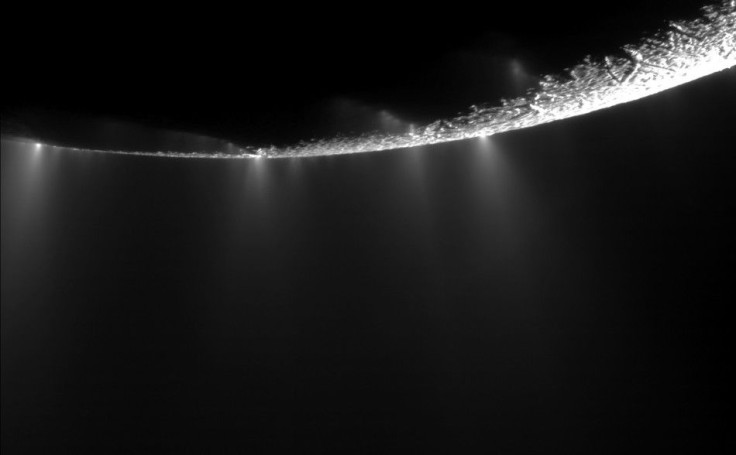Scientists Solve 14-Year Mystery, Discover Saturn's Water Source

The latest discovery around Saturn reveals that a moon covered with ice is providing water to the planet, creating a rain-showering halo. The water vapors are visible as tiger-like stripes of gas and ice that escape at the southern pole of the moon and become a main water-source vapor for Saturn's upper atmosphere.
Thanks to Saturn's sixth-largest moon Enceladus, the mystery that has baffled scientists for 14 years is now solved. The Herschel space observatory explains that the ring of water vapors surrounding Saturn originates from Enceladus. The ring is 10 times greater than Saturn's radius, and Enceladus continues to feed the ring of water vapors during its orbit.
Another find shows that Saturn's moon is the only one that carries influence in regard to chemical composition toward its parent planet.
"There is no analogy to this behavior on Earth. No significant quantities of water enter our atmosphere from space. This is unique to Saturn," said Paul Hartogh, a project scientist from the Max-Planck-Institut für Sonnensystemforschung.
Enceladus consists of icy geysers that release water into space, forming a donut-shaped region. Only a small percentage of water from Enceladus actually reaches Saturn while the rest freezes or falls onto other nearby moons. Due to the incremental amount of water entering Saturn's lower levels, clouds are not observable after it condenses. The result of water landing on Saturn produces carbon dioxide.
In previous discoveries, Saturn's large moon Titan contains water in its upper atmosphere. The relationship between the two moons show that rain from Enceladus falls onto Titan, but in small amounts. The source of water for Titan still requires explanation.
"After Cassini's detection of Enceladus' plumes, Herschel has finally shown where the water emanating from this moon ends up -- a nice piece of teamwork exploiting the complementarity of two very different missions in ESA's Science programme. We now look forward to hopefully shedding new light on the origin of water in the atmosphere of Titan and the other giant planets as well," said Goran Pilbratt, a Project Scientist at ESA Herschel.
Must Read: Futuristic Luxury Yacht Brings Volcanic Paradise On Board (PHOTOS)
"Goodnight, Amy, sleep tight." Winehouse's Private Funeral (Photos)
Casey Anthony-Related Merchandises Selling Like Hot Cakes on Ebay (PHOTOS)
© Copyright IBTimes 2025. All rights reserved.





















